

James Wong
2025 Audi A5 Sedan TFSI 150kW review
4 Days Ago
It's the first time Ford has offered the petrol Focus ST hot hatch with an automatic transmission. That's a good thing, right? We find out!
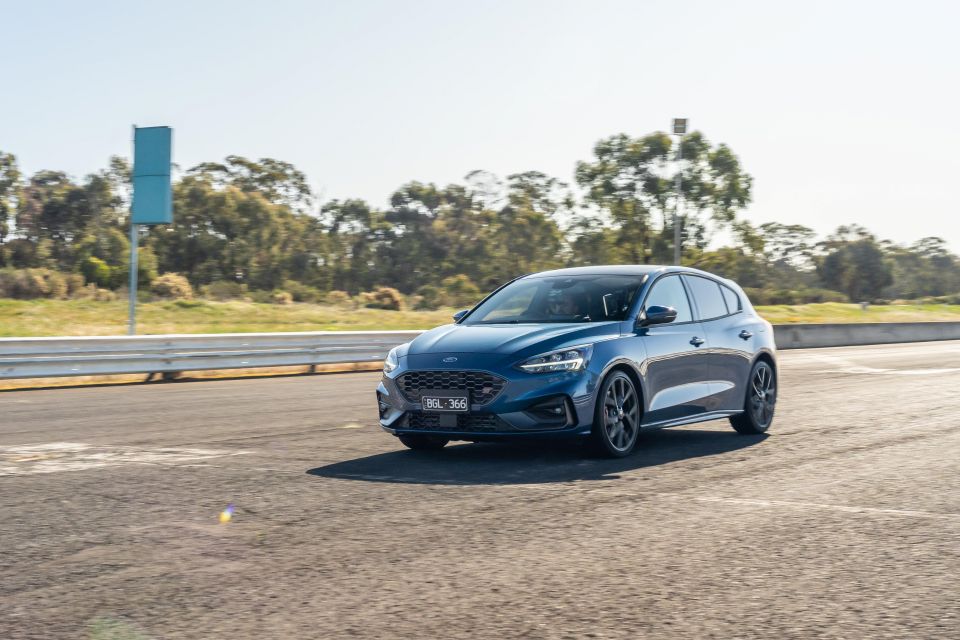


Founder
New from
$23,490
excl. on-roads

Founder
New from
$23,490
excl. on-roads


Founder
New from
$23,490
excl. on-roads

Founder
New from
$23,490
excl. on-roads
Quickly see how this car stacks up against its competition. Select any benchmark to see more details.
CarExpert helps new car buyers save thousands with expert reviews, honest advice, and transparent pricing – no dealer pressure and no sales games.
Hot hatches have gone from hotted-up versions of regular hatches to quite sophisticated pieces of machinery.
For a long time, they were also a manual-only zone – but times have changed. Buyers now want a hot hatch they can drive to work daily, which means switching out the traditional manual for an automatic.
We’ve already reviewed the manual Ford Focus ST (and we were pretty impressed), but for the first time the Ford Focus ST is available with an automatic in Australia. Yes, we know the diesel ST was available with an automatic, but it was never sold in Australia…
So, is the automatic Ford Focus ST is just an easier-to-drive version of the manual? Not quite, as it turns out.
Pricing for the 2020 Ford Focus ST is pretty straightforward. Buyers can opt for a manual or automatic transmission at no additional cost, meaning there’s one price, which is $44,690 before on-road costs.
There are seven colours to choose from, with all but the base white and red costing an additional $650.

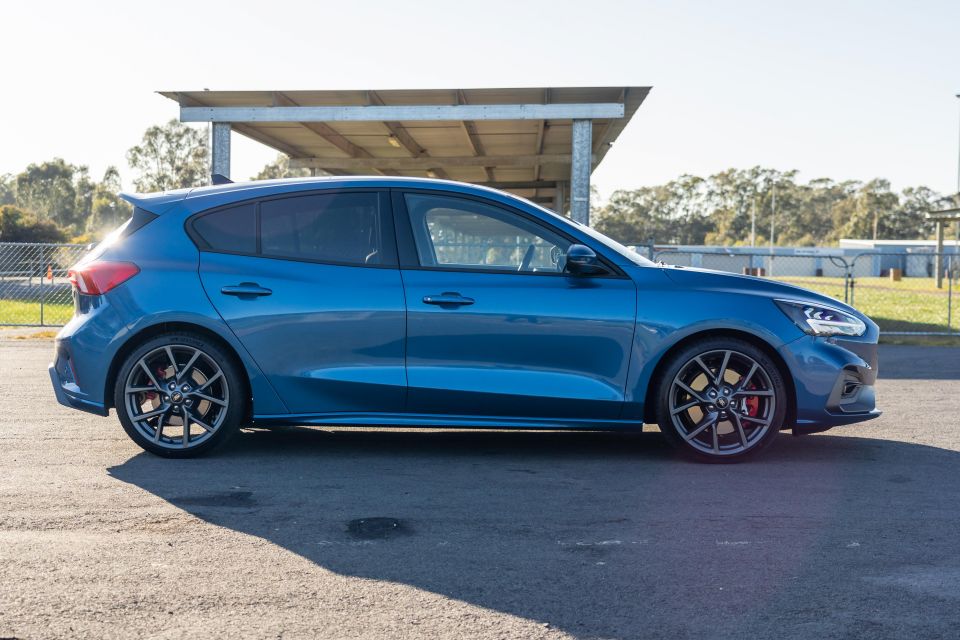
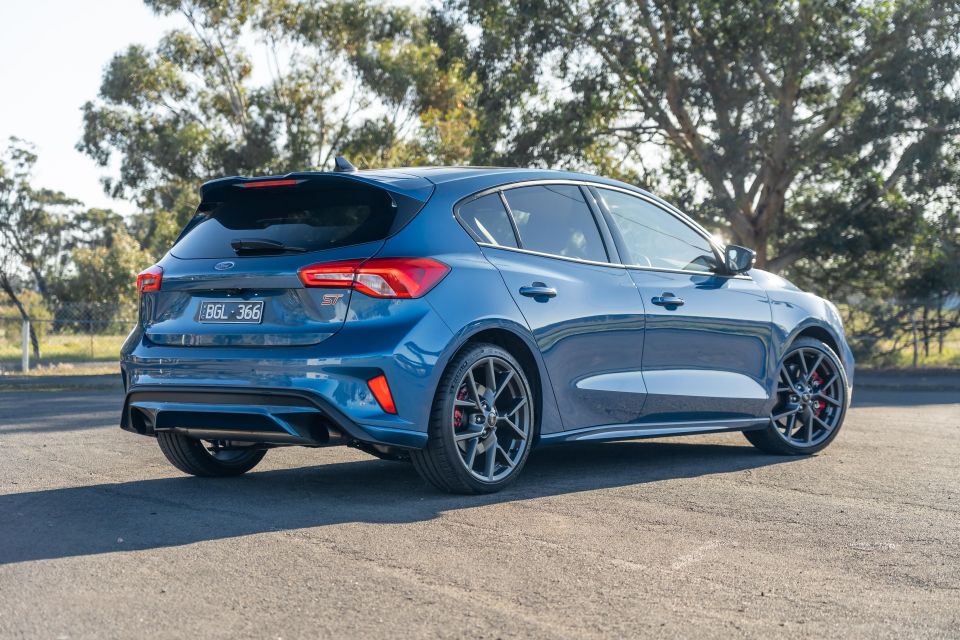
There’s also only one additional option on both variants, which is a panoramic sunroof. It’ll set you back $2500.
Both variants are built in Germany.
Ford hasn’t been stingy with included features, which is good news for buyers.
On the outside you’ll find 19-inch alloy wheels on 235mm-wide Michelin Pilot Sport 4S tyres, adaptive LED headlights and LED tail lights, rain-sensing wipers, proximity entry and start, a roof mounted spoiler, and automatic headlights.
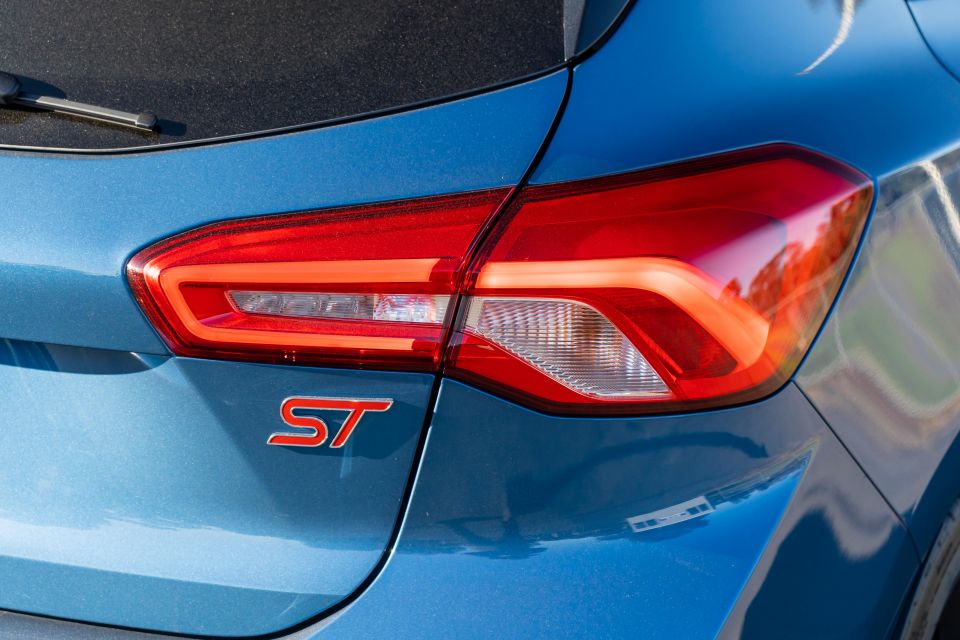
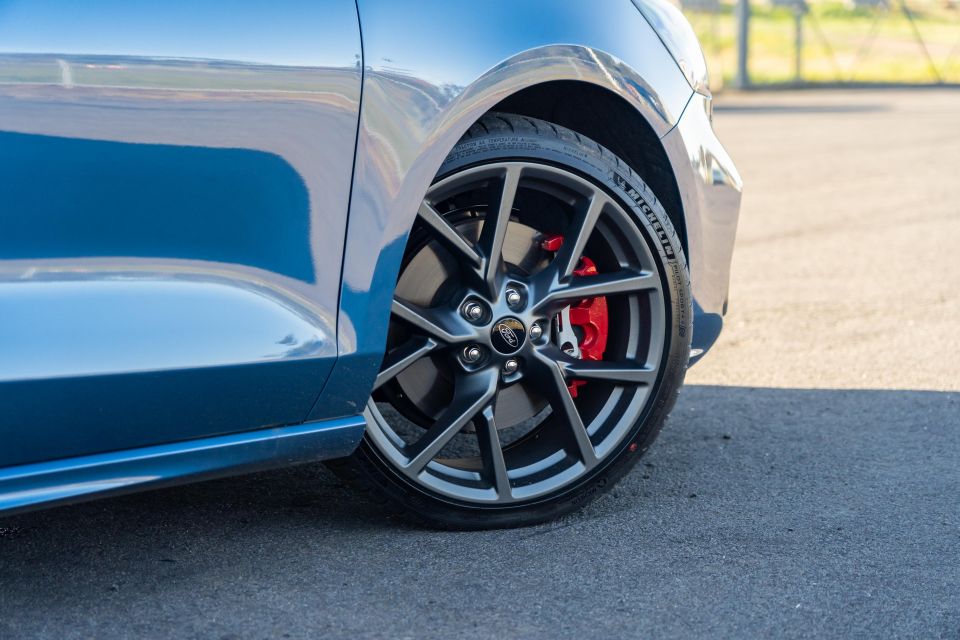
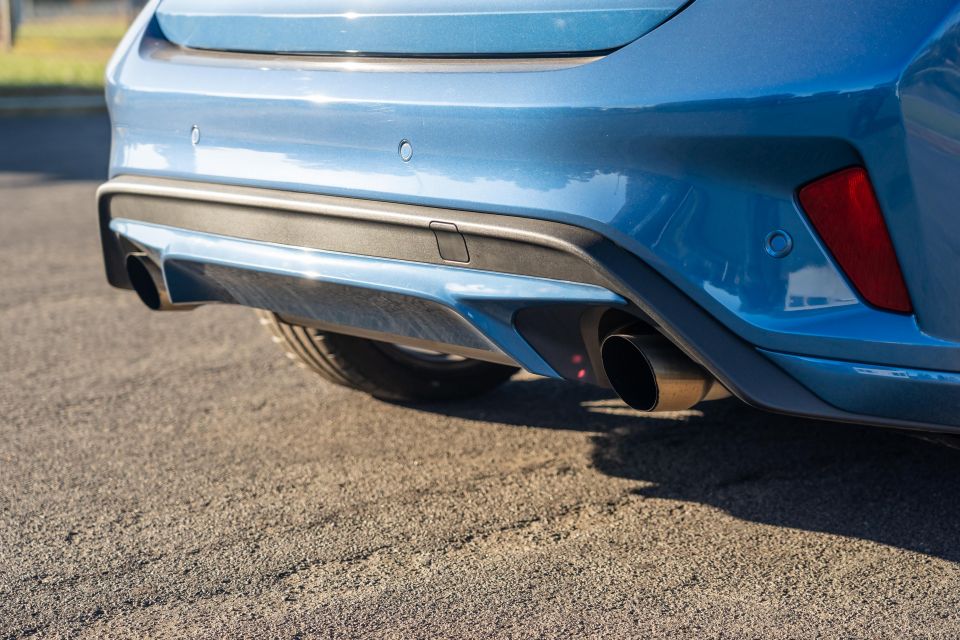
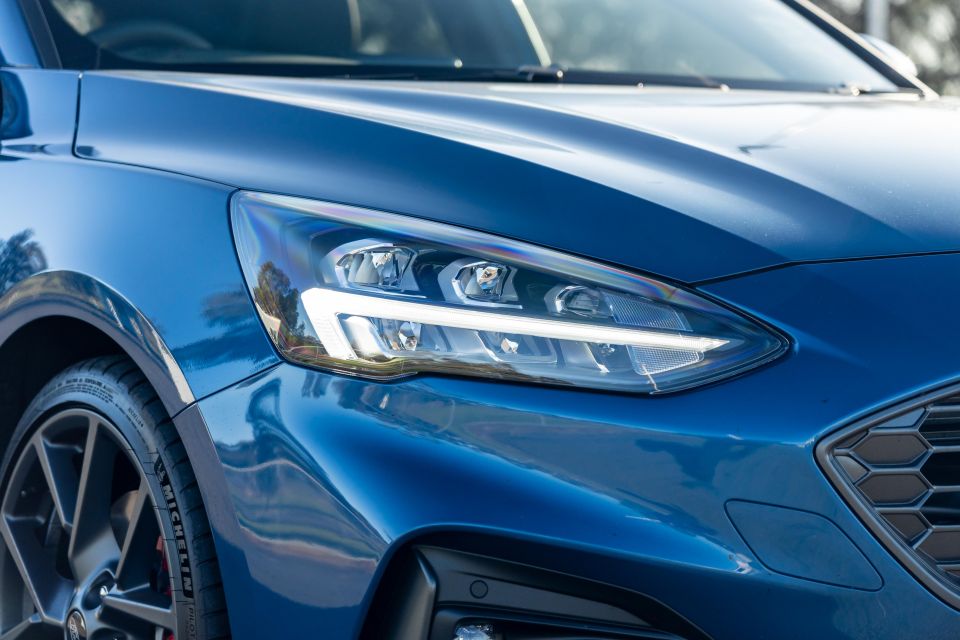
Inside the cabin you’ll find heated Recaro sport seats, a 10-speaker Bang and Olufsen Play sound system, Apple CarPlay and Android Auto through an 8.0-inch Sync3 infotainment system, dual-zone climate control, an electronic park brake, wireless phone charging, radar cruise control, front and rear parking sensors, a 180-degree reverse-view camera, along with AM/FM and DAB+ digital radio.
Beneath the cargo floor is a space saver spare tyre.
The Ford Focus ST scored a five-star ANCAP rating when it was tested in 2019.
Standard safety equipment includes front, side and curtain airbags for the first and second rows, low- and high-speed autonomous emergency braking with pedestrian detection, blind-spot monitoring, rear autonomous emergency braking, and lane departure assistant.
In addition to a near perfect 96 per cent passenger occupant rating, the Focus Focus ST achieved an 87 per cent child occupant rating, 72 per cent vulnerable road user rating and a 72 per cent safety assist score.
Ford has upped its interior game with a concerted effort on quality and fit and finish.
It’s a simple design with a tiered dashboard featuring the Sync3 infotainment system placed proudly at the top.
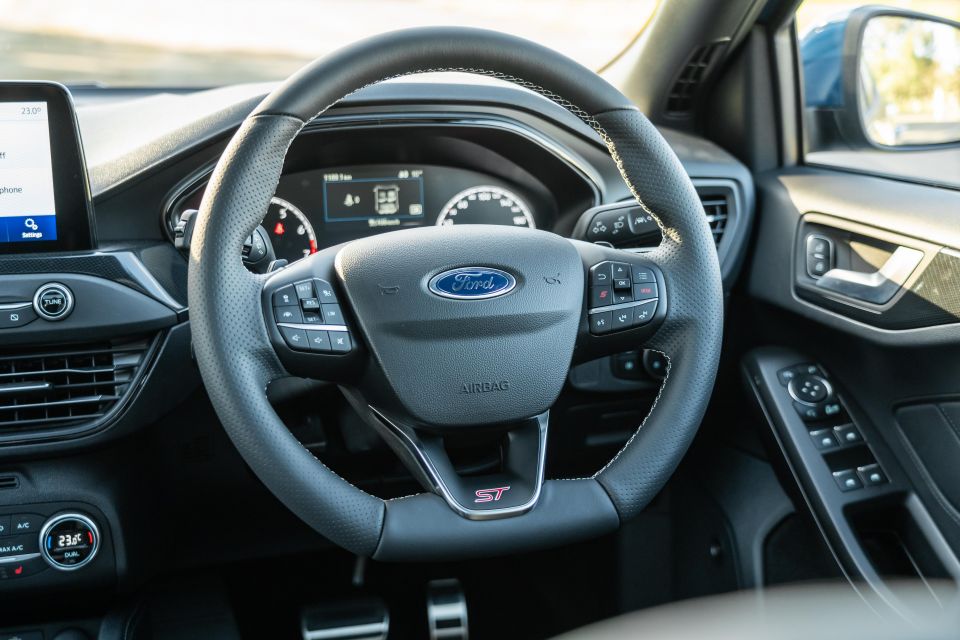
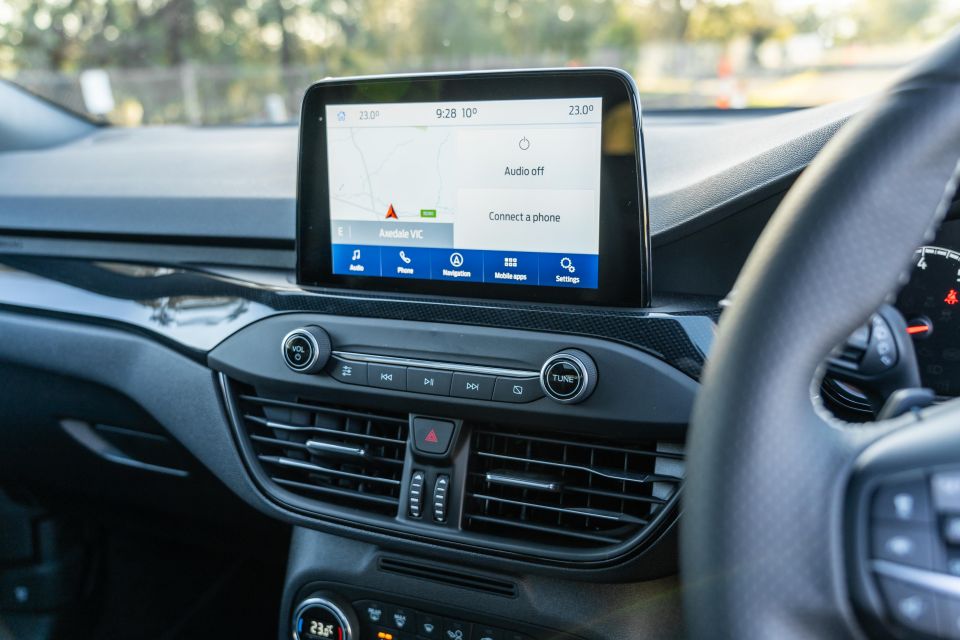

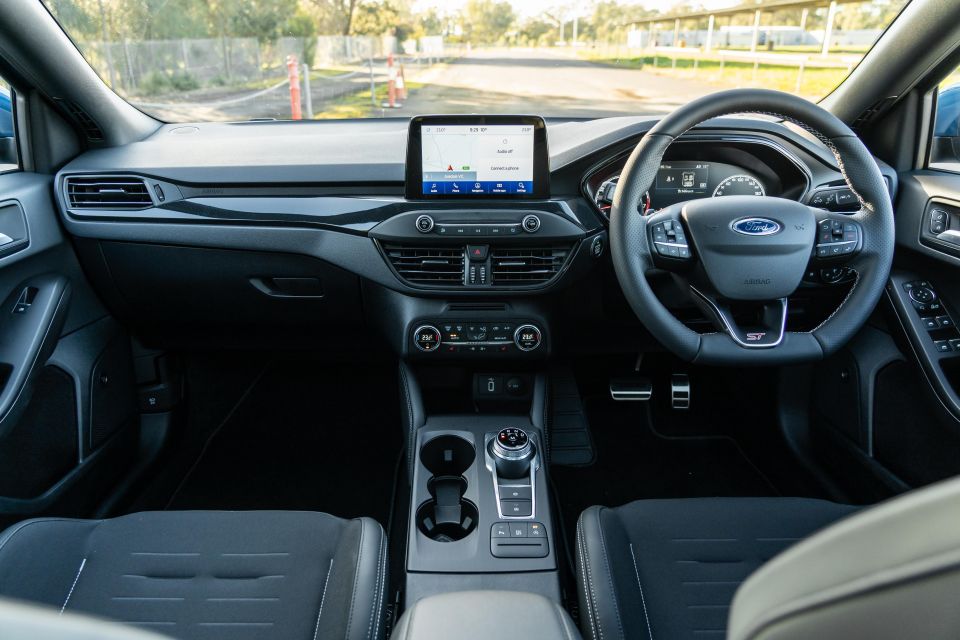
Ahead of the driver are analogue gauges with an LCD display between the gauges, which is controlled by the driver using the right-hand side of the steering wheel.
The Ford Focus ST scores a meaty steering wheel with a flat bottom and an ST badge embedded in the bottom portion of it.
Sync3 is one of the better infotainment systems on the market, featured here on an 8.0-inch colour touchscreen with Apple CarPlay and Android Auto built in through a wired system, along with wireless phone charging.
The menu items are logically organised, with physical shortcut buttons beneath the screen and menu items at the bottom of the screen itself.
Voice recognition is available through the vehicle’s inbuilt system and it works very well, but can also be activated through the attached smartphone.
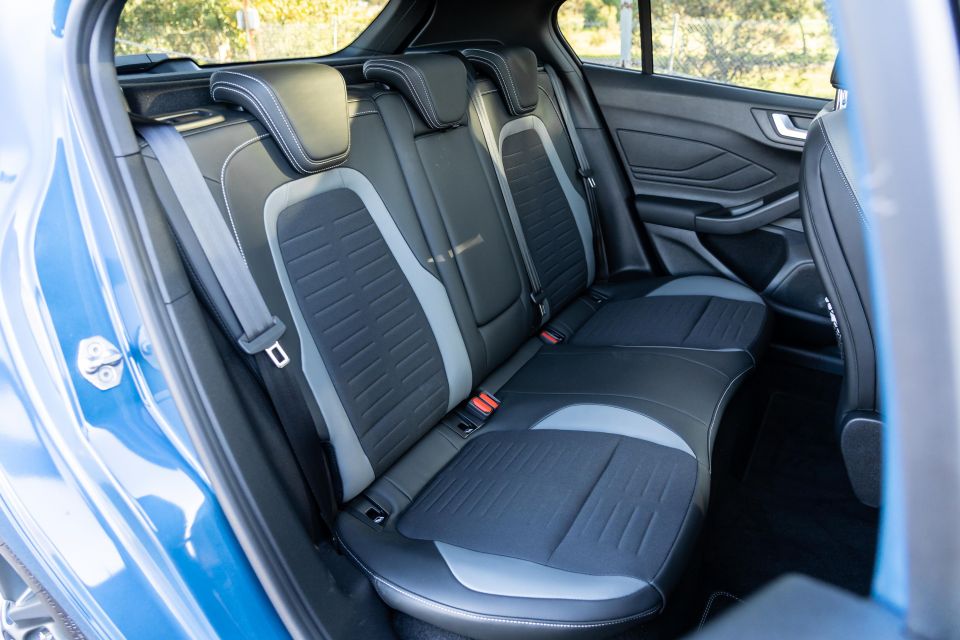
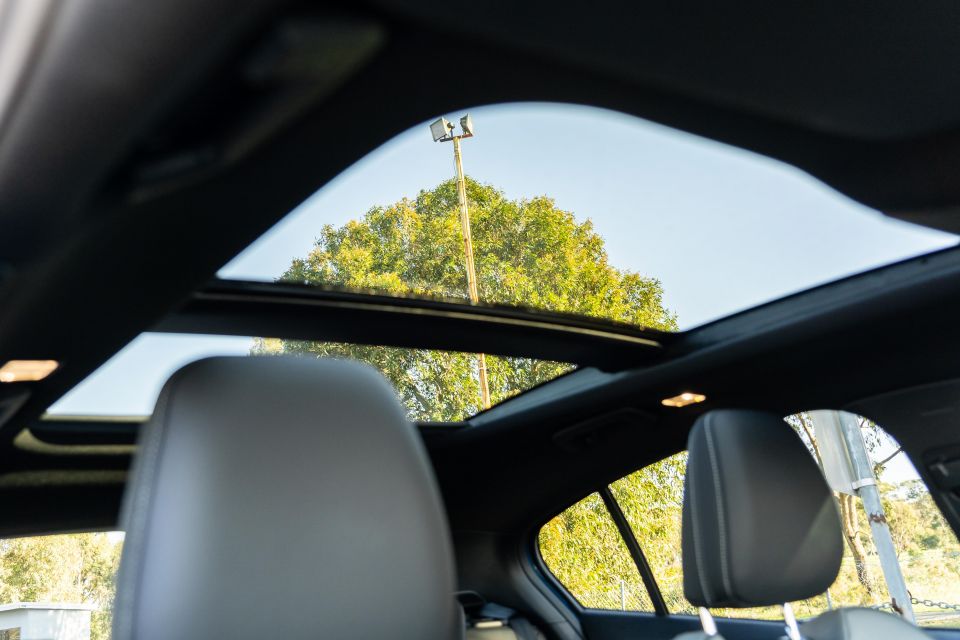

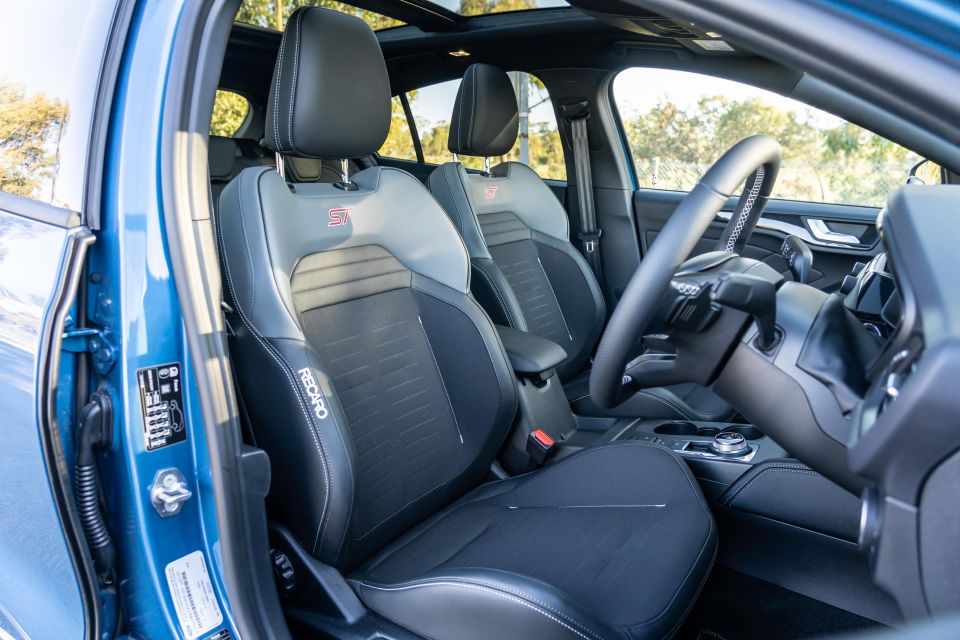
There’s plenty of storage around the cabin with three cup holders in the centre console, bottle holders in the doors, and generous storage in the glove box and centre console.
We did notice a couple of fit and finish issues, with the coin tray in the centre console slightly bent, and a rattle inside the door that was noticeable as the stereo was turned up.
Speaking of the stereo, the Ford Focus ST comes with a 10-speaker B&O Play sound system including a chunky subwoofer beneath the boot floor. The sound system is excellent and one of the best ones we’ve heard in a car this size.
The Recaro seats wrap around and hug you in tightly. The front row features seat heating, along with enough adjustability to get the perfect seating position. While they’re comfortable for shorter journeys, we found them a little uncomfortable on longer drives.
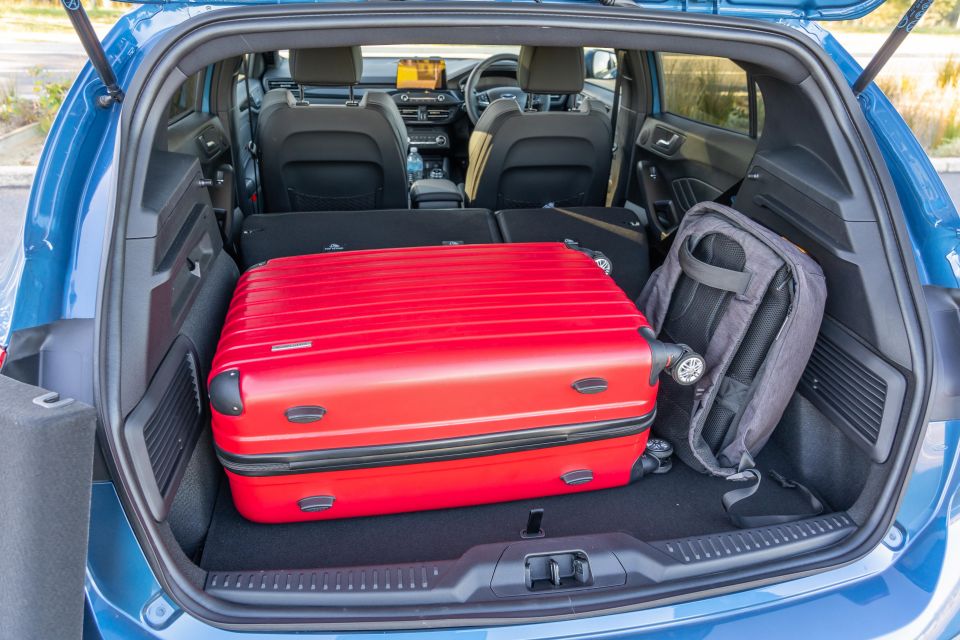
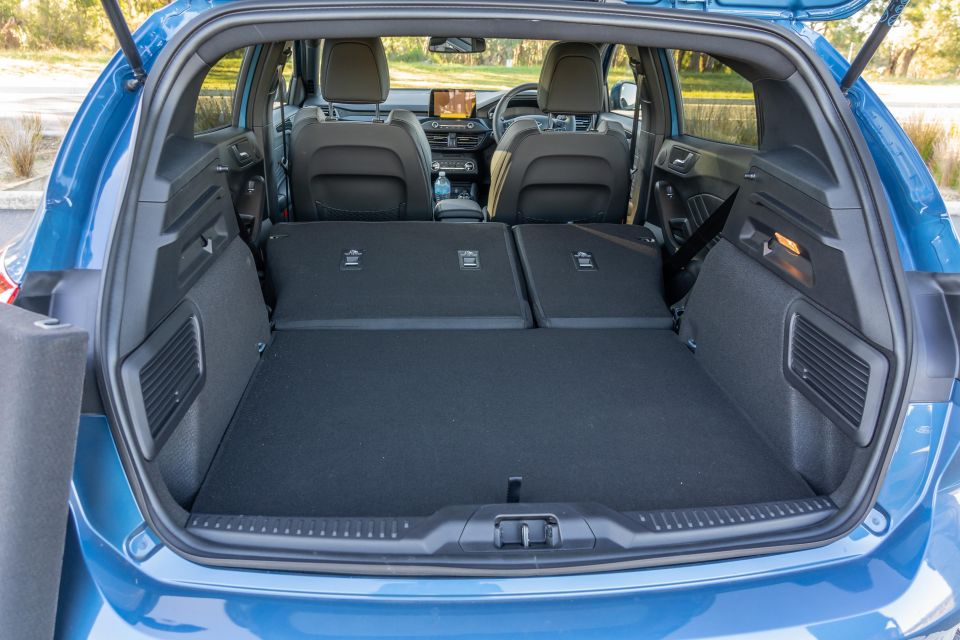
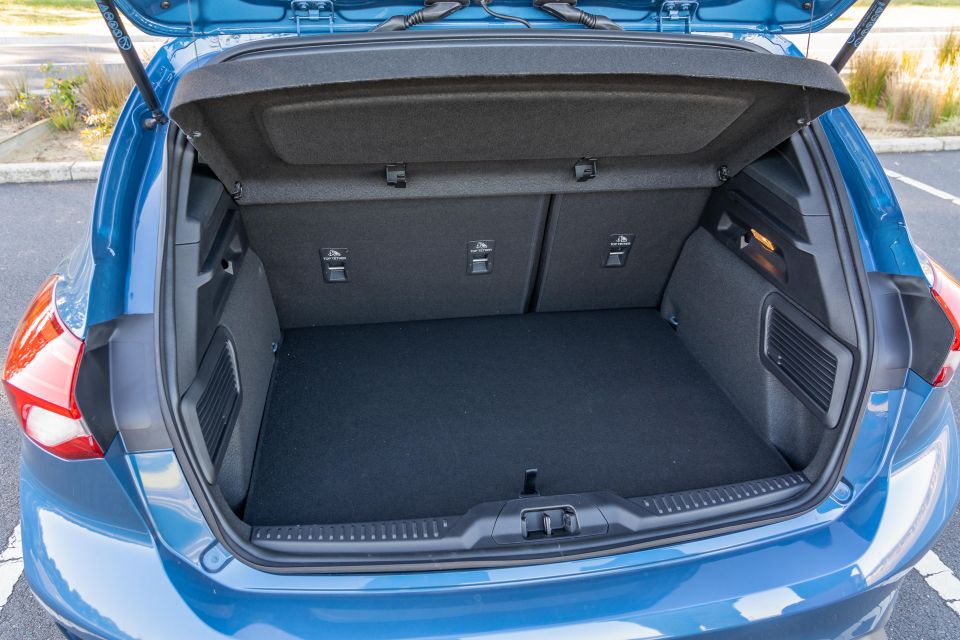
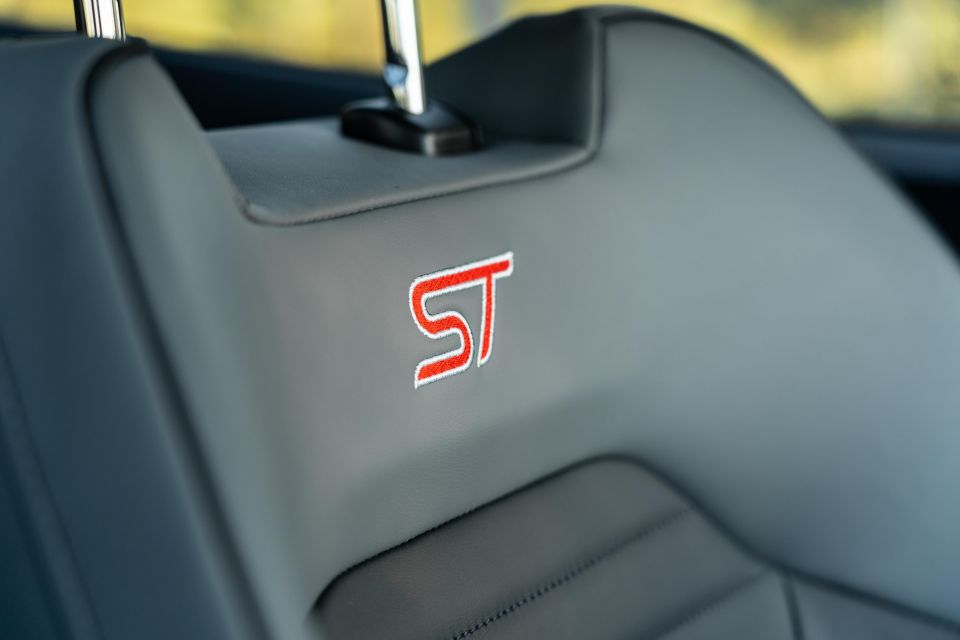
In the second row there isn’t a great deal of head, knee or toe room, but there’s enough room to sit comfortably alongside another adult.
There’s a centre armrest with two cup holders, map pockets, and a bottle holder in each door. But the second row drops a little in quality with a raft of hard plastics used across the second row doors.
Cargo capacity comes in at a fairly limited 277 litres, due to the subwoofer beneath the floor. It sits within the space saver spare tyre.
Under the bonnet is a 2.3-litre four-cylinder EcoBoost petrol engine producing 206kW of power and 420Nm of torque.
The package is mated to a seven-speed torque converter automatic transmission and sends torque exclusively to the front wheels.
The engine consumes 8.6 litres of fuel per 100km on the combined cycle and requires a minimum of 95RON premium unleaded petrol. We recorded a little over 10L/100km, but keep in mind that included country driving, highway driving, and a jaunt at the drag strip.

Fun story on the transmission – it started off life as an eight-speed automatic transmission. Ford engineers removed the third gear because the ratios between second and third were a little too tight.
That’s how it ended up with a seven-speed transmission.
Torque is sent to the road through an electronically-actuated mechanical limited-slip differential. It uses an electronically-locking clutch that can vary its level of lock at any time to achieve maximum traction.
Hit the starter button and there’s a meaty burble at idle. The dual exhaust outlets are almost perfectly tuned to give bystanders an idea this isn’t just a regular Ford Focus.
The seven-speed automatic transmission is excellent for low-speed driving. Unlike dual-clutch transmissions in other hot hatches that tend to be unsure of themselves at low speeds, the torque converter in the Focus ST does stop/start manoeuvres like any other Focus.
Jump on the throttle from a standing start and it also responds quickly, delivering torque almost instantly. Ford has also fixed the turning circle, with a now more respectable turning circle of 10.7 metres. The old one was a whopping 12.4m in comparison.
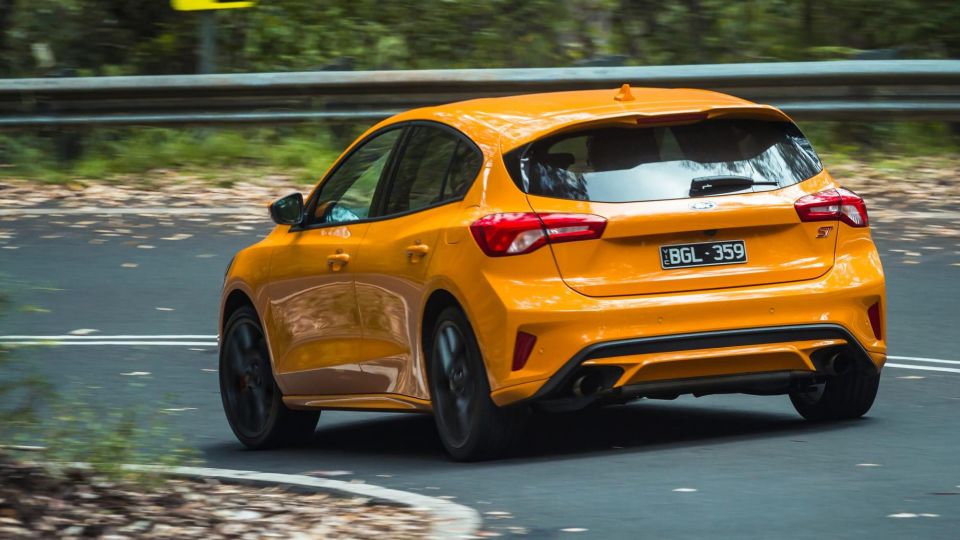
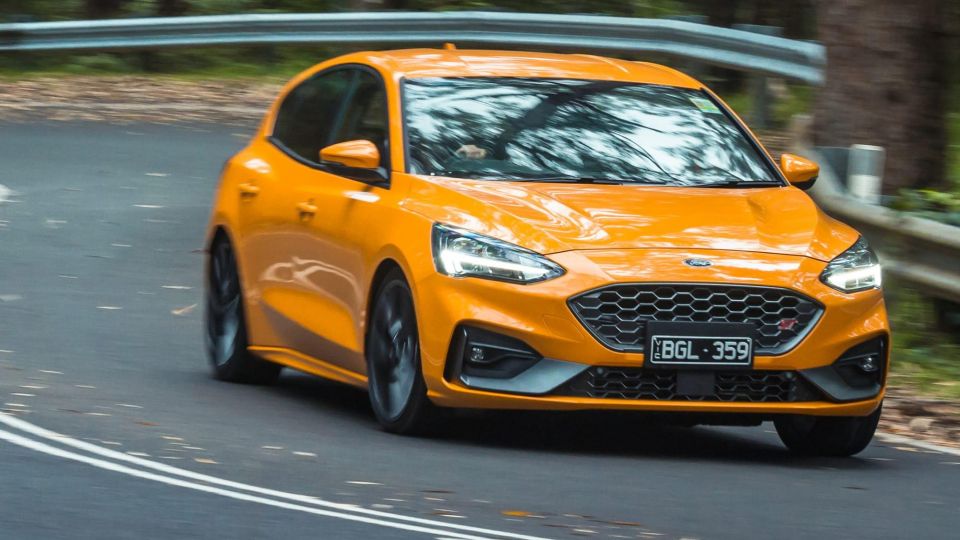
Once you set off, the first thing you’ll notice is that the ride is sporty – very sporty, in fact. If you hit a speed hump or collect a pot hole, you’ll know about it. Even in the Normal mode, where the adaptive dampers are at their softest, there’s not a great deal of compliance.
Ford did integrate a pot hole mode in the adaptive damping system to allow the suspension to variably cope with unexpected road changes, but it’s hard to tell the difference behind the wheel.
Step outside the city and the Ford Focus ST really comes to life. Throttle response is excellent and it has a real urgency about it. 420Nm of torque is a lot for a front-wheel drive hot hatch and there’s seldom a time where you find the Focus ST napping in gear.
The limited-slip differential does an excellent job quelling torque steering and while it does limit it, it doesn’t eliminate it entirely. It’s almost impossible to reign in just over 200kW of power when it’s all fed through the front axle.
Instead it offers enough slip of an inside wheel to correct the vehicle’s direction before it applies extra locking across the axle to more evenly distribute torque.
Press the ‘S’ button on the steering wheel and the Focus ST enters Sport mode. An additional push of the mode button then switches it over to Race, where it enters a limited stability mode.
Both of these modes not only tighten up the ride by a significant margin, to a properly firm level, they add extra steering resistance and enable anti-lag. Anti-lag is a system first developed for rally cars that allows an engine to continue operating the exhaust side of the combustion cycle to maintain turbocharger pressure.
This results in the turbocharger constantly being on boost, which reduces throttle lag. It works really well and while the engine is already sharp and responsive enough, this adds an extra element of depth to the mix.
We tested the Focus ST on some country roads and in Sport and Race modes the ride became unbearably firm. It was choppy through corners and mid-corner bumps would send the car shuffling off its line and shoot minor thumps through the steering wheel.
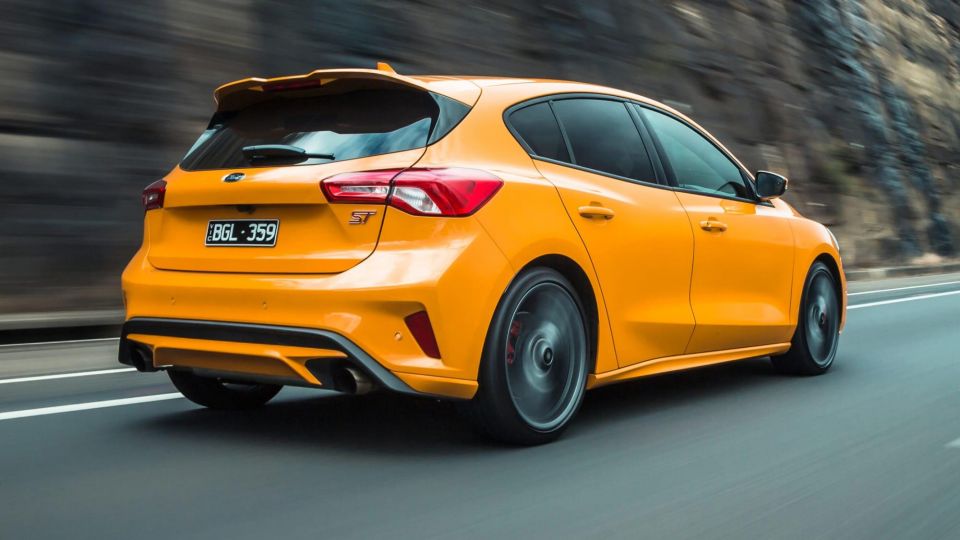

On a perfectly flat race track or road surface it would be sublime, but on a country road it feels a little too raucous in comparison to its peers.
It all becomes even more frustrating with the automatic transmission. Upshifts are fast, sharp and hard to fault, but the downshifts that really prevent you from getting into a rhythm. Once you pull the left-hand paddle on the steering wheel you can almost count the tenths of a second before the gear is ready.
During that downshift there are no exhaust pops or cracks, and no real sense of emotion inside or outside the car. It’s almost like two separate engineers design the exhaust system for the Focus ST manual and the automatic.
With a manual transmission there are bangs, cracks and pops as the car goes up and down gears, but nothing of the sort in the automatic.
If you put the automatic transmission to one side, the Focus ST feels like it lives on a harder edge than its competitors in this segment. And that’s what some customers are going to want to buy one for.
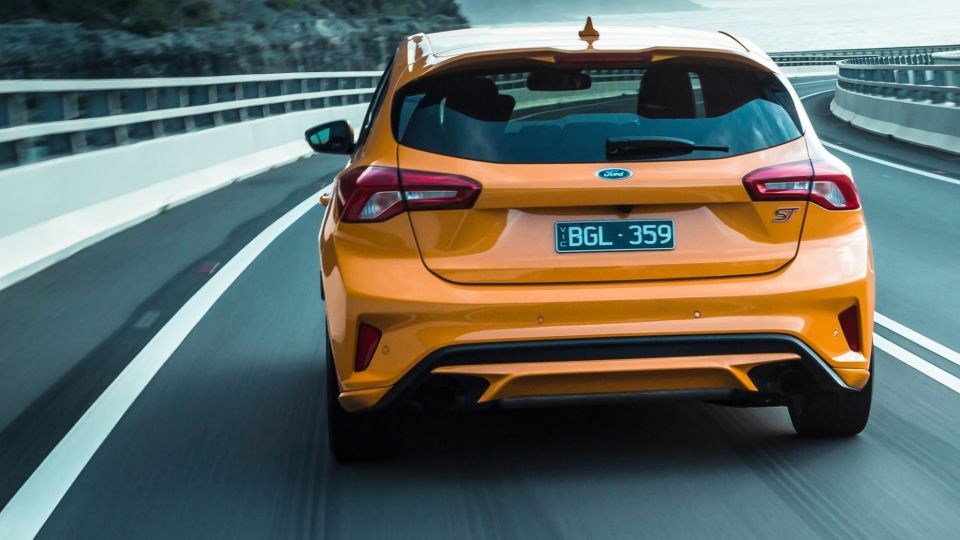
As for the brakes? They’re sensational. Ford spent a lot of time engineering the brake system to endure track days and a day of punishment driving up and down mountains. The rotors measure 330mm up front with floating calipers, while the rear uses 302mm rotors. Both ends feature red calipers.
It does sound like I’ve been a negative above, but the package is just let down by the automatic transmission. It takes away from the engaging feel of the manual Focus ST.
It takes all of the hardcore elements of it and brings them down several notches with painfully slow downshifts.
We had the chance to hit up the drag strip in the Ford Focus ST to see how quick it was against the stop watch. We also wanted to see how it would fare against one of the segment leaders, the Volkswagen Golf GTI. Our best time for the Focus ST was:
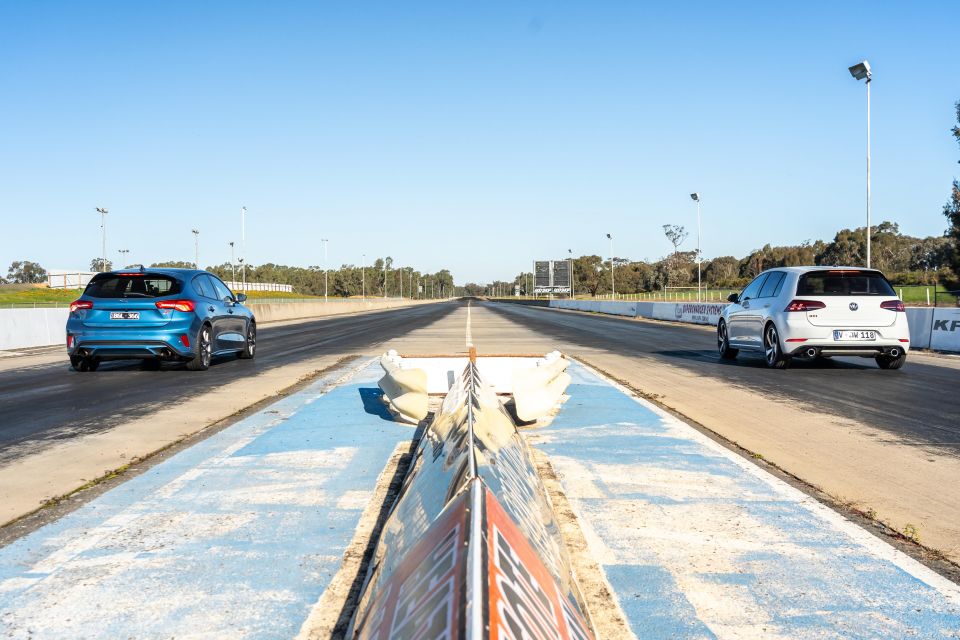
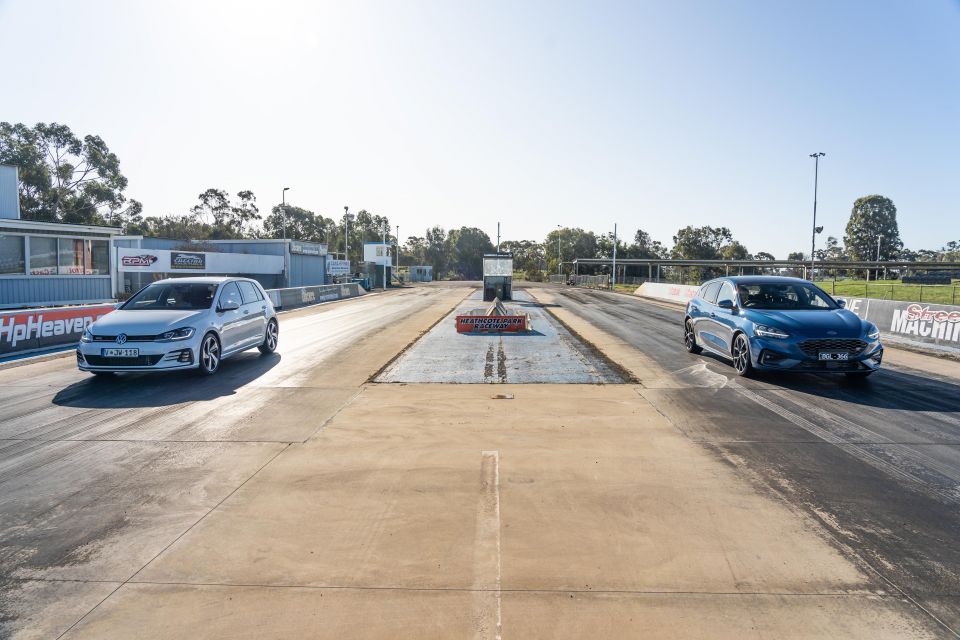
Throw a Volkswagen Golf GTI into the mix and things get competitive very quickly. The Golf GTI we used belonged to our James Wong. He drives a Golf GTI Performance DSG, which means it uses a limited-slip differential and comes with launch control (which the Focus ST misses).
The numbers show that the launch control system in the Golf GTI hampered its start slightly, but it was almost catching the Focus ST by the end of the 1/4 mile.
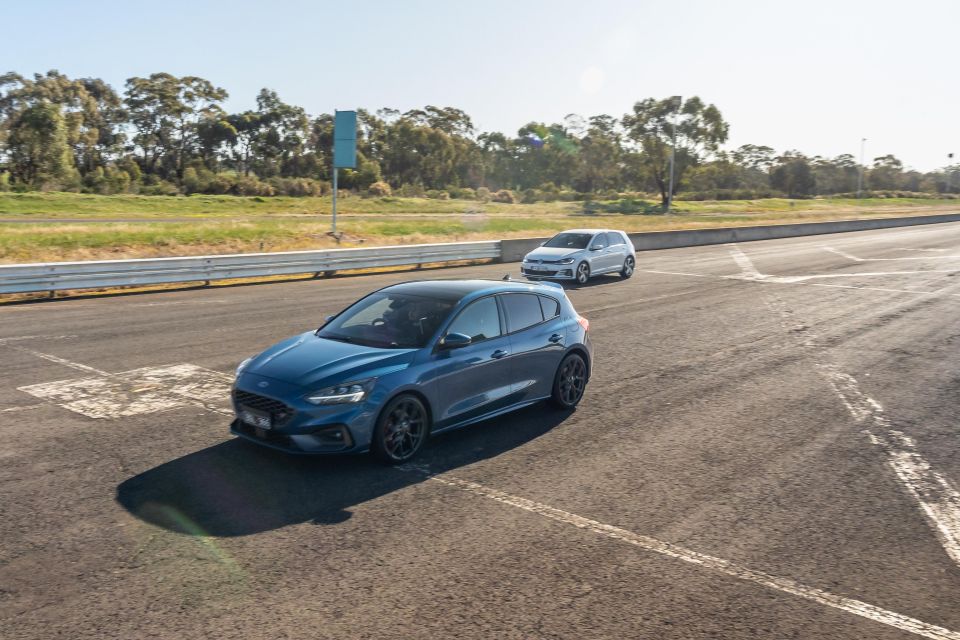
It’s worth mentioning the surface at the drag strip. It’s unprepared and we make every effort to warm tyres up, but there’s only so much you can do on a surface like this. We expect there’s another 0.2 or 0.3 seconds in the times on a prepared surface.
Ford offers a five-year warranty across its entire range and that’s for an unlimited amount of kilometres. It also includes roadside assistance for up to seven years as along as you service your vehicle with a Ford dealer.
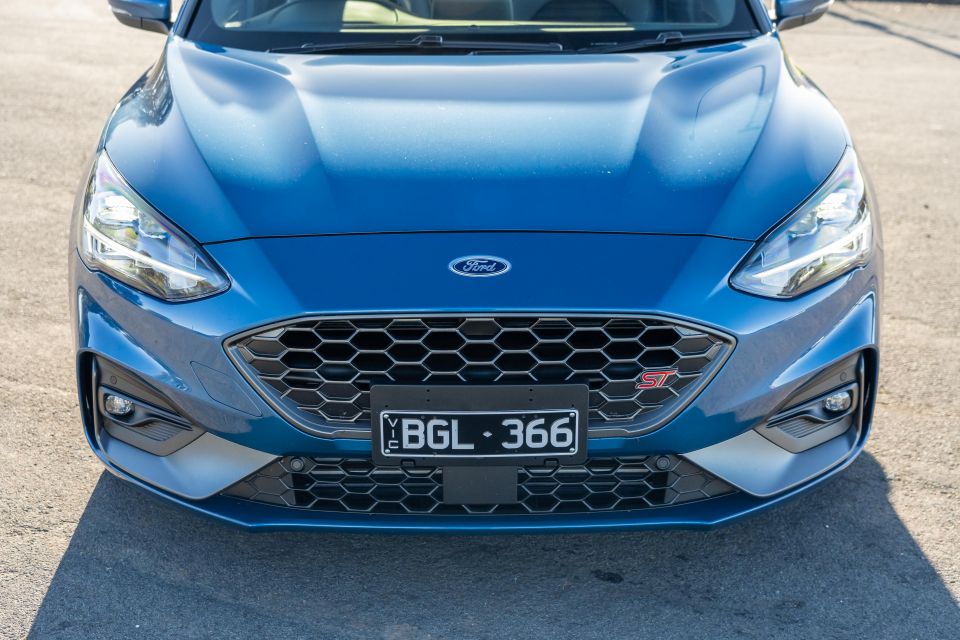

Servicing occurs every 12 months or 15,000km and is capped for the first four services at $299. Over a five-year period that comes out to $1546 over five years or around $309 per service.
I thought this was going to be the perfect hot hatch. Performance with a traditional torque converter to make day-to-day driving easy work.
But to accommodate the torque converter transmission, Ford has sacrificed the noise and emotion one would expect with a fiery hot hatch like the Ford Focus ST. The automatic misses out on the cracks and pops and comes with really slow downshifts – it really hampers a car that feels much, much better in manual trim.
Outside of the automatic transmission, the ride is quite firm and the road noise will get tiresome if you spend a lot of time behind the wheel on long stretches of country road.

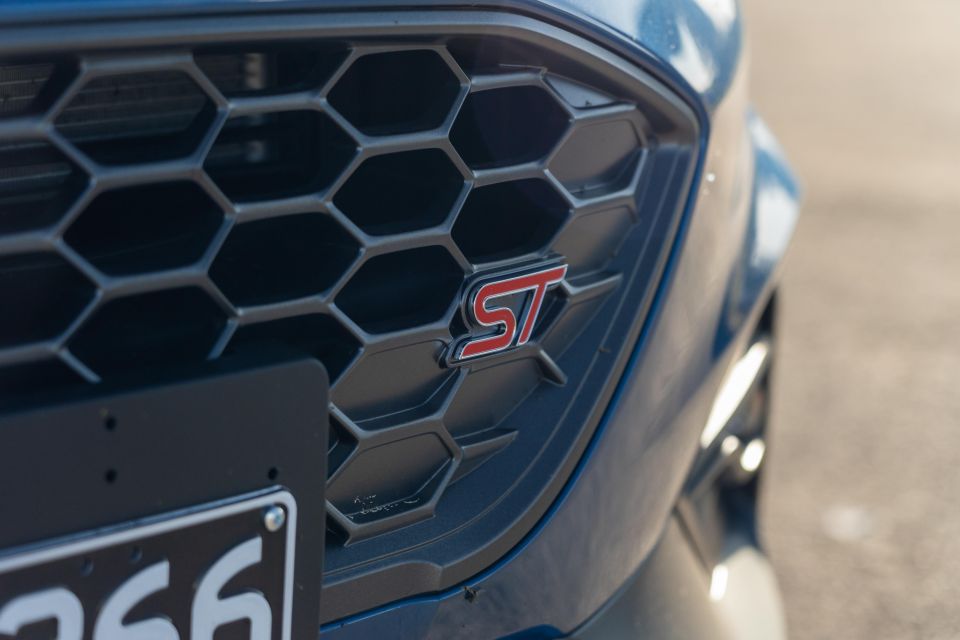
CarExpert helps new car buyers save thousands with expert reviews, honest advice, and transparent pricing – no dealer pressure and no sales games.
Put those things to one side and the Ford Focus ST is a proper hot hatch. It does straight line fast, it hooks up through corners, and there’s plenty of engagement behind the wheel.
It arguably sits a little too far on the hot side, but if you’re willing to sacrifice ride comfort and cabin noise, it’s the car for you. Just make sure you get it with a manual transmission, the automatic really detracts from the whole experience.
CarExpert helps new car buyers save thousands with expert reviews, honest advice, and transparent pricing – no dealer pressure and no sales games.
Paul Maric is an Australian car expert based in Melbourne, Australia. Paul is a founder of CarExpert.com.au & formerly part of the CarAdvice founding team.


James Wong
4 Days Ago


Matt Campbell
3 Days Ago
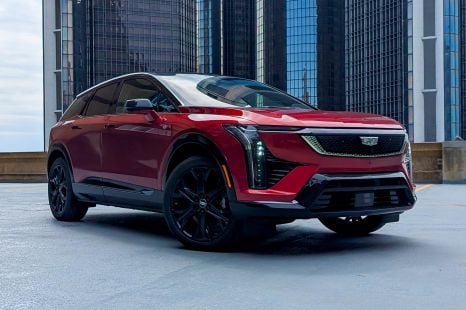

William Stopford
2 Days Ago


CarExpert.com.au
14 Hours Ago


William Stopford
13 Hours Ago
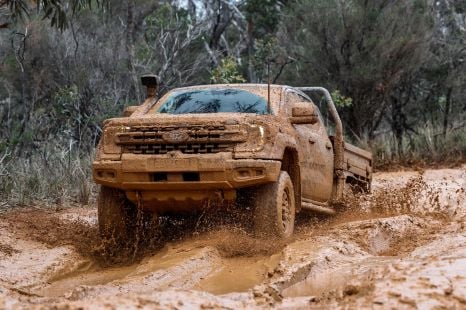

William Stopford
12 Hours Ago